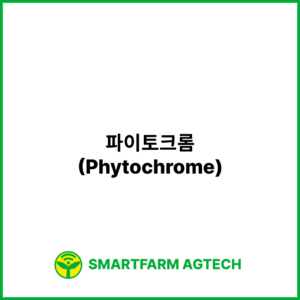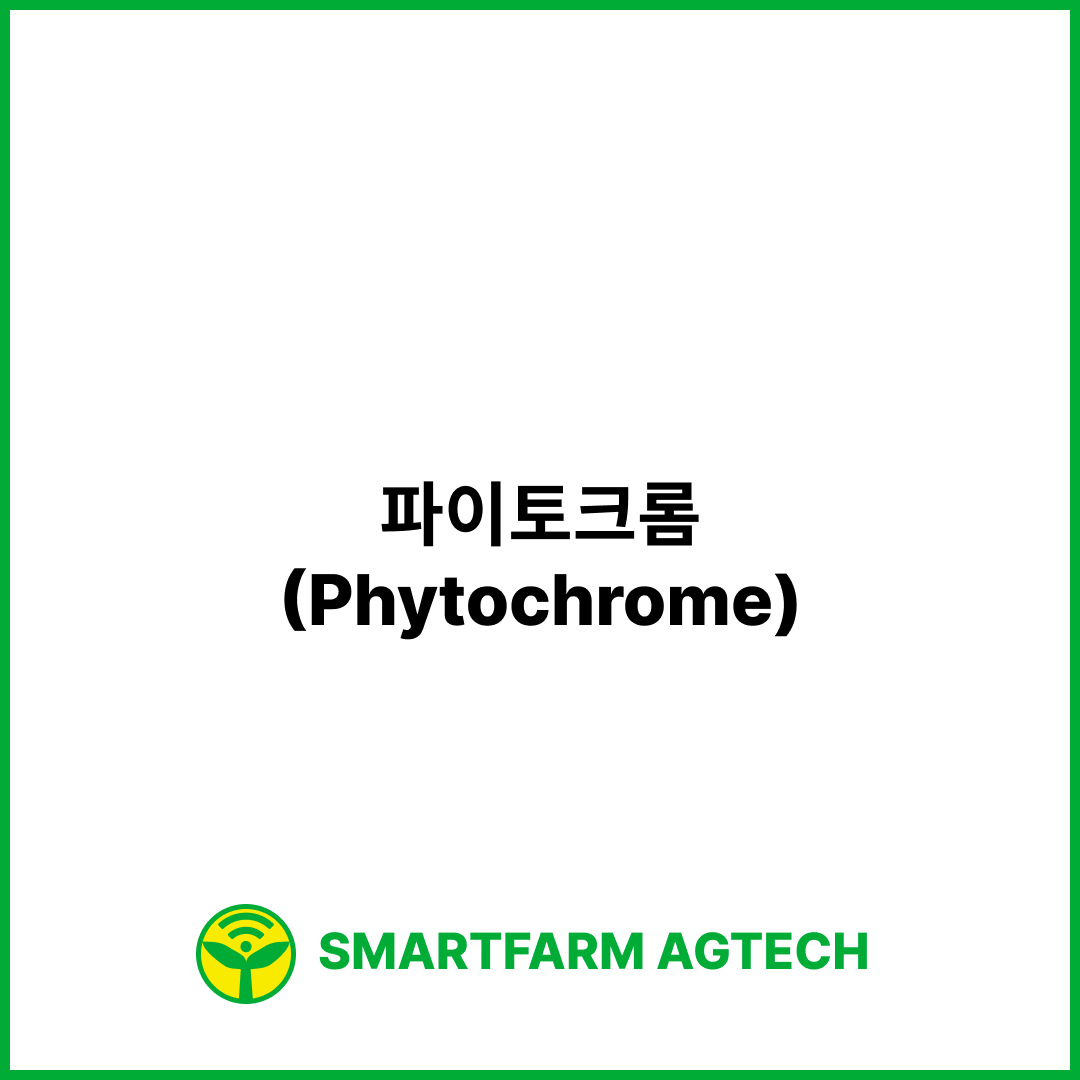파이토크롬(Phytochrome) | 스마트팜피디아 (Smartfarm Pedia)는 스마트농업관리사 혹은 스마트농업전문가라면 알아야 할 내용 중에 하나입니다. 자세한 내용은 아래의 내용을 통해 확인해보시기 바랍니다.
파이토크롬(Phytochrome) | 스마트팜피디아 (Smartfarm Pedia)
파이토크롬(Phytochrome)

파이토크롬은 빛에 반응하는 식물의 색소 단백질입니다. 이는 빛의 파장과 강도에 따라 활성이 변하는데, 주로 식물체의 유무와 일조 시간을 감지하여 식물의 생육과 개화를 조절하는 데 중요한 역할을 합니다.
기능과 작용
시안토불린 제어
파이토크롬은 시안토불린 생산을 조절하는데 관여합니다. 시안토불린은 꽃의 개화 및 성숙을 제어하며, 파이토크롬이 빛에 반응함에 따라 시안토불린의 양이 변화합니다.
광주름 효과
파이토크롬은 식물이 햇빛을 받을 때 줄기와 잎이 길게 늘어지는 현상인 광주름을 조절합니다. 이는 빛에 노출될 때 파이토크롬이 활성화되어 세포의 신장을 촉진함으로써 일어납니다.
씨앗 발아 및 꽃 개화
파이토크롬은 씨앗의 발아를 조절하고, 꽃이 개화하도록 유도합니다. 어두운 환경에서 파이토크롬이 비활성화되어 씨앗은 휴면 상태를 유지하며, 빛이 들어오면 파이토크롬이 활성화되어 씨앗이 발아합니다. 또한, 꽃이 개화하는 시기 또한 파이토크롬의 활성화에 영향을 받습니다.
노화와 생육
파이토크롬은 식물의 노화 및 생육 주기에도 영향을 미칩니다. 빛의 조건이 변함에 따라 식물은 성장, 꽃 피우기, 씨앗 생산, 노화 등의 단계를 조절합니다.
환경 조절과 농업에서의 활용
농업에서는 인공 빛 조건을 활용하여 식물의 생육 주기를 조절하기 위해 파이토크롬을 모방한 인공 빛 시스템이 사용됩니다. 이를 통해 식물의 생육 속도 및 수량을 최적화할 수 있습니다. 또한, 파이토크롬의 이해는 식물 육성과 식물학 연구에서 중요한 역할을 합니다.
파이토크롬은 빛의 변화에 민감하게 반응하여 식물이 환경 변화에 적응할 수 있도록 도와주는 키파워입니다. 이러한 특성은 자연 환경에서의 식물 생존과 인공적인 환경에서의 식물 재배에 모두 관련이 깊습니다.
Phytochrome
Phytochrome is a light-sensitive pigment protein in plants. It reacts to the wavelength and intensity of light, primarily detecting the presence or absence of light and regulating plant growth and flowering accordingly.
Functions and Mechanisms
Cyanotobulin Regulation
Phytochrome is involved in controlling cyanotobulin production. Cyanotobulin regulates flower blooming and maturation. The quantity of cyanotobulin changes based on the activation of phytochrome in response to light.
Phototropic Response
Phytochrome regulates the phototropic response, where stems and leaves elongate when exposed to sunlight. This effect, called phototropism, occurs because phytochrome, when activated by light, promotes cell elongation.
Seed Germination and Flowering
Phytochrome plays a crucial role in seed germination and flowering. In the absence of light, phytochrome remains inactive, keeping seeds in a dormant state. When light is present, phytochrome becomes active, promoting seed germination. It also influences the timing of flowering in plants.
Aging and Growth
Phytochrome affects the aging process and growth cycles of plants. Plants adjust their growth, flowering, seed production, and aging based on changing light conditions.
Environmental Control and Agricultural Applications
In agriculture, artificial light systems mimicking phytochrome responses are used to optimize plant growth cycles. These systems manipulate the light conditions to regulate plant growth rates and yields. Understanding phytochrome’s role is essential for both plant cultivation and botanical research.
Phytochrome serves as a key player, allowing plants to adapt to changing light conditions, ensuring their survival in natural environments, and facilitating controlled plant cultivation in artificial settings.
참고)
- 스마트팜피디아 SMARTFARMPEDIA – 바로찾는 스마트팜 용어집 (발간등록번호 11-1543000-003389-0

